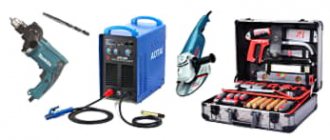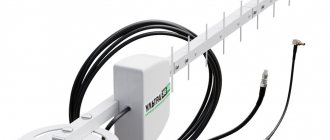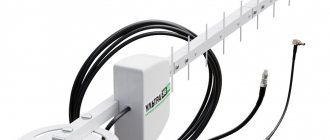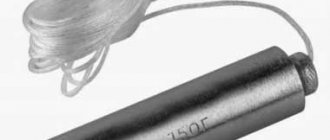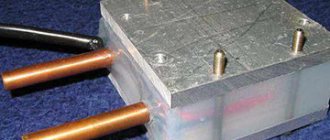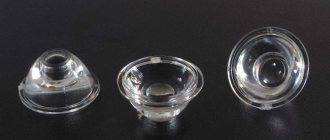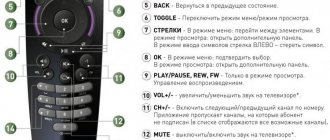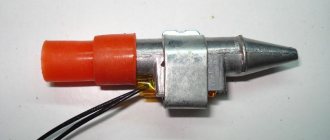Refrigeration equipment has become so firmly established in our lives that it is even difficult to imagine how we could manage without it. But classic refrigerant designs are not suitable for mobile use, for example, as a traveling cooler bag.
Cooler bag with Peltier elements, no compressor, no need for freon or other refrigerants
For this purpose, installations are used in which the operating principle is based on the Peltier effect. Let's briefly talk about this phenomenon.
What it is?
This term refers to a thermoelectric phenomenon discovered in 1834 by the French naturalist Jean-Charles Peltier. The essence of the effect is the release or absorption of heat in the area where dissimilar conductors through which electric current passes are in contact.
In accordance with the classical theory, there is the following explanation for the phenomenon: electric current transfers electrons between metals, which can accelerate or slow down their movement, depending on the contact potential difference in conductors made of different materials. Accordingly, with an increase in kinetic energy, it is converted into thermal energy.
On the second conductor, a reverse process is observed, requiring replenishment of energy, in accordance with the fundamental law of physics. This occurs due to thermal vibration, which causes cooling of the metal from which the second conductor is made.
Modern technologies make it possible to produce semiconductor elements-modules with maximum thermoelectric effect. It makes sense to briefly talk about their design.
Peltier and Seebeck effects
Despite the fact that the first Peltier element was created almost 2 centuries ago, the operating principle has found application only now, when suitable materials and the need for use have appeared. It consists of heat generation at the contact of dissimilar conductors when electric current flows through them. When the polarity changes, the contact area begins to cool. The process is reversible: when a temperature difference is artificially maintained at the contacts of conductors, an electric current flows in their circuit (Seebeck effect).
Based on two thermoelectric effects, a Peltier module was created, the elements of which are located between two parallel ceramic plates in the form of dissimilar conductors. The current passing through the contact of the conductors is the same, but the energy flows in each of them are different. When more energy enters the contact than flows out of it, this means that electrons are inhibited in the transition region, causing it to heat up. When the polarity changes, the electrons accelerate, taking energy from the crystal lattice, which causes it to cool.
The Peltier effect is especially active at the boundaries of semiconductor elements, where energy processes are highest.
Design and principle of operation
Modern modules are a structure consisting of two insulating plates (usually ceramic), with serially connected thermocouples located between them. A simplified diagram of such an element can be found in the figure below.
Design of a modular Peltier element
Designations:
- A – contacts for connecting to a power source;
- B – hot surface of the element;
- C – cold side;
- D – copper conductors;
- E – semiconductor based on p-junction;
- F – n-type semiconductor.
The design is made in such a way that each side of the module is in contact with either pn or np junctions (depending on polarity). Contacts pn heat up, np contacts cool (see Fig. 3). Accordingly, a temperature difference (DT) occurs on the sides of the element. To an observer, this effect will look like a transfer of thermal energy between the sides of the module. It is noteworthy that changing the power polarity leads to a change in hot and cold surfaces.
Rice. 3. A – hot side of the thermoelement, B – cold side
Will need
- Peltier elements - 6 pieces. The TEC1-12705 model is designed for 12 V and 60 W, you can buy it here - AliExpress.
- A power supply from a computer or any other with 12 V and a power of at least 400 W, you can buy here - AliExpress.
- Wires 2.5 sq. mm. - a couple of meters.
This is from the main one, see the text for other details and tools.
Specifications
The characteristics of thermoelectric modules are described by the following parameters:
- cooling capacity (Qmax), this characteristic is determined based on the maximum permissible current and the temperature difference between the sides of the module, measured in Watts;
- maximum temperature difference between the sides of the element (DTmax), the parameter is given for ideal conditions, the unit of measurement is degrees;
- permissible current required to ensure maximum temperature difference - Imax;
- the maximum voltage Umax required for the current Imax to reach the peak difference DTmax;
- internal resistance of the module – Resistance, indicated in Ohms;
- efficiency coefficient - COP (abbreviation from English - coefficient of performance), essentially this is the efficiency of the device, showing the ratio of cooling to power consumption. For inexpensive elements this parameter is in the range of 0.3-0.35, for more expensive models it approaches 0.5.
Electric generators from Peltier modules
The Peltier element, whose operating principle is reversible, is used to create mini-power plants in the absence of electricity sources. To assemble a TEG you need the following elements:
- Peltier module capable of withstanding temperatures from 300 °C. TES-12712 models with side dimensions of square plates of 40, 50 and 60 mm are common. If you choose a product of the maximum size, one element is enough to charge your mobile phone. The maximum current is shown by the last two digits of the marking - 12 a.
- Boost converter. The generator may not provide the required voltage and should be increased. To charge gadgets, you should choose a device with a USB connector.
- Heater and cooler. For camping conditions or a summer cottage, a fire heating source is suitable: a homemade stove, a lamp, a candle, a fire. A modern solution is a catalytic heater, which allows you to recharge your mobile phone on the go. Air or water can be used for cooling.
- Design. A homemade Peltier element consists of a container in which a fire is lit, and a module is attached to the outside with thermal paste. It is connected through wires to a voltage converter. It is important here not to overheat the device. To do this, a radiator is glued to the cold side of the module.
Marking
Let's look at how typical module markings are deciphered using the example of Figure 4.
Figure 4. Peltier module marked TEC1-12706
The marking is divided into three meaningful groups:
- Element designation. The first two letters are always unchanged (TE), indicating that this is a thermoelement. The next one indicates the size, there may be the letters “C” (standard) and “S” (small). The last number indicates how many layers (cascades) there are in the element.
- The number of thermocouples in the module shown in the photo is 127.
- The rated current is in Amperes, for us it is 6 A.
The markings of other models of the TEC1 series are read in the same way, for example: 12703, 12705, 12710, etc.
Heat release
The cooling effect of a TEM is small, but it produces a lot of heat. When it is used in a system unit, the temperature inside increases significantly, affecting the operation of other equipment. Additional means to reduce it are fans and radiators that create thermal exhaust.
The thermal regime of the module must be correctly calculated so that there is no overheating and condensation does not form on the electronic boards. A Peltier cooler is selected with optimal power, where it is important to ensure the correct ratio of temperature inside the case, cooling object and air humidity.
Application
Despite the rather low efficiency, thermoelectric elements are widely used in measuring, computing, and household appliances. Modules are an important operating element of the following devices:
- mobile refrigeration units;
- small generators to generate electricity;
- cooling systems in personal computers;
- coolers for cooling and heating water;
- dehumidifiers, etc.
Let us give detailed examples of the use of thermoelectric modules.
Refrigerator using Peltier elements
Thermoelectric refrigeration units are significantly inferior in performance to compressor and absorption analogues. But they have significant advantages, which makes their use advisable under certain conditions. These advantages include:
- simplicity of design;
- vibration resistance;
- absence of moving elements (except for the fan blowing the radiator);
- low noise level;
- small dimensions;
- ability to work in any position;
- long service life;
- low energy consumption.
These characteristics are ideal for mobile installations.
Thermoelectric auto-refrigerator installed in the car interior
Peltier element as an electricity generator
Thermoelectric modules can work as electricity generators if one of their sides is subjected to forced heating. The greater the temperature difference between the sides, the higher the current generated by the source. Unfortunately, the maximum temperature for the thermal generator is limited; it cannot be higher than the melting point of the solder used in the module. Violation of this condition will lead to failure of the element.
For mass production of thermal generators, special modules with refractory solder are used; they can be heated to a temperature of 300°C. In ordinary elements, for example, TEC1 12715, the limit is 150 degrees.
Since the efficiency of such devices is low, they are used only in cases where it is not possible to use a more efficient source of electrical energy. However, 5-10 W thermal generators are in demand among tourists, geologists and residents of remote areas. Large and powerful stationary installations powered by high-temperature fuel are used to power gas distribution units, meteorological station equipment, etc.
Thermoelectric generator B25-12 (M) 12 volt, 25 watt
To cool the processor
Relatively recently, these modules began to be used in CPU cooling systems of personal computers. Considering the low efficiency of thermoelements, the benefits of such structures are rather doubtful. For example, to cool a heat source with a power of 100-170 W (corresponding to most modern CPU models), you will need to spend 400-680 W, which requires installing a powerful power supply.
The second pitfall is that an unloaded processor will release less thermal energy, and the module can cool it below the dew point. As a result, condensation will begin to form, which is guaranteed to damage the electronics.
Those who decide to create such a system on their own will need to carry out a series of calculations to select the power of the module for a specific processor model.
Based on the above, using these modules as a CPU cooling system is not cost-effective; in addition, they can cause computer equipment to fail.
The situation is completely different with hybrid devices, where thermal modules are used in conjunction with water or air cooling.
Thermoelectric cooler Armada
Hybrid cooling systems have proven their effectiveness, but the high cost limits the circle of their admirers.
Air conditioner based on Peltier elements
Theoretically, such a device will be structurally much simpler than classic climate control systems, but it all comes down to low performance. It’s one thing to cool a small volume of a refrigerator, another thing to cool a room or the interior of a car. Air conditioners using thermoelectric modules will consume more electricity (3-4 times) than equipment running on refrigerant.
As for using it as a car climate control system, the power of a standard generator will not be enough to operate such a device. Replacing it with more efficient equipment will lead to significant fuel consumption, which is not cost-effective.
In thematic forums, discussions on this topic periodically arise and various home-made designs are considered, but a full-fledged working prototype has not yet been created (not counting the air conditioner for a hamster). It is quite possible that the situation will change when modules with more acceptable efficiency become widely available.
For cooling water
The thermoelectric element is often used as a coolant for water coolers. The design includes: a cooling module, a thermostat-controlled controller and a heater. This implementation is much simpler and cheaper than a compressor circuit; in addition, it is more reliable and easier to operate. But there are also certain disadvantages:
- water does not cool below 10-12°C;
- cooling takes longer than its compressor counterpart, therefore, such a cooler is not suitable for an office with a large number of employees;
- the device is sensitive to external temperature, in a warm room the water will not cool to the minimum temperature;
- Installation in dusty rooms is not recommended, as the fan may become clogged and the cooling module may fail.
Tabletop water cooler using Peltier element
Air dryer based on Peltier elements
Unlike an air conditioner, the implementation of a dehumidifier using thermoelectric elements is quite possible. The design is quite simple and inexpensive. The cooling module lowers the temperature of the radiator below the dew point, as a result, moisture contained in the air passing through the device settles on it. The settled water is discharged into a special storage tank.
A simple and inexpensive Chinese dehumidifier using Peltier elements
Despite the low efficiency, in this case the efficiency of the device is quite satisfactory.
Types and principles of operation of portable air conditioners
There are several types of portable air conditioners, which differ both in design and operating principle.
Portable condensing device
Everything is simple here: such an air conditioner is a regular monoblock with an evaporative and condensing heat exchanger, a compressor and a fan. Freon is used as a refrigerant. As a rule, portable climate control equipment of this type is produced in a floor-standing version. The main advantage of such installations is the absence of complex installation work. The disadvantages include: high noise levels and demands on the removal of hot air.
Portable Evaporative Air Conditioner
Structurally, this device consists of a housing in which are installed: a heat exchange block made of capillary-porous material with through channels for free air movement; heating elements; fan creating air flow; container for collecting water.
The operating principle of this device is quite simple. Water enters the heat exchange block and passes through the pores of the material located inside. Air is supplied through through channels located throughout the entire volume of the heat exchange unit, which leads to the evaporation of water. Water takes heat from the air and gives it cold, which accompanies the evaporation process. To increase the rate of water evaporation, a fan is provided in the design of such a device.
As a result: the air leaving the device has a lower temperature than the air entering the device. In addition to cooling, air masses are cleaned of dust and moisturized. A distinctive feature of such air conditioners is the absence of any pipeline and the ability to operate in fan heater mode in the winter season. Using such a simple and autonomous device, you get a personal portable air conditioner for relatively little money.
Portable battery powered air conditioner
In fact, this device was invented for cooling cars, thanks to which its supply voltage is 12V, although this small device can operate from any 12-volt battery. The car mini air conditioner is enclosed in a small plastic case and does not require complex installation. According to manufacturers, the principle of operation of such a device is similar to the operation of a conventional split system: The refrigerant circulates in the system and evaporates when heated, which makes heat exchange possible.
Manual micro-conditioner powered by USB interface
This device can hardly be called a representative of climate control technology, although it has a right to life. Its operating principle is similar to that of an evaporative air conditioner: the sponge in the device plays the role of a heat exchange unit. Under the influence of a stream of air, moisture from the sponge evaporates, which leads to a decrease in the temperature of the air flow. This device requires power solely to rotate the built-in fan.
How to check the Peltier element for functionality?
The simplest and most reliable method is tactile. It is necessary to connect the module to the appropriate voltage source and touch its different sides. For a working element, one of them will be warmer, the other colder.
If you don’t have a suitable source at hand, you will need a multimeter and a lighter. The verification process is quite simple:
- connect the probes to the module terminals;
- bring the lit lighter to one of the sides;
- We observe the readings of the device.
In the working module, when one of the sides is heated, an electric current is generated, which will be displayed on the device display.
Air conditioner installation
An air conditioner can be installed in any window. To do this, such a bracket is made from a shaped aluminum profile.
Which will clearly rest on the doors and prevent the entire structure from falling out.
To close the gap not to the closed window, a strip of polycarbonate or other plastic is cut along the width of the air conditioner. And is inserted into the window groove.
We press the entire structure with the equalizer.
As you can see, I have a sliding window, but you will have to come up with your own mounting design. The main thing is that one side of the device is on the street, and the other at home. And there was no draft through the cracks.
How to make a Peltier element with your own hands?
It is almost impossible to make a homemade module at home, especially since there is no point in doing so, given their relatively low cost (about $4-$10). But you can assemble a device that will be useful on a hike, for example, a thermoelectric generator.
Connection diagram for a homemade thermogenerator
To stabilize the voltage, it is necessary to assemble a simple converter on the L6920 IC chip.
Schematic diagram of a voltage converter
The input of such a converter is supplied with a voltage in the range of 0.8-5.5 V, and at the output it will produce a stable 5 V, which is quite enough to recharge most mobile devices. If a conventional Peltier element is used, it is necessary to limit the operating temperature range of the heated side to 150 °C. To avoid the hassle of tracking, it is better to use a pot of boiling water as a heat source. In this case, the element is guaranteed not to heat above 100 °C.
Refrigerator from a Peltier module
The Peltier element for cooling the processor is more effective than standard elements. At the same time, the latter remain, but are used only to remove heat from the enclosed space of the computer.
When designing them as a cooler for electronic devices, the following features must be taken into account.
- Power is directly related to the size of the module. Small devices will not provide the required level of cooling. For example, they will not ensure normal processor temperature conditions. A module that is too powerful causes moisture to appear, which causes short circuits in the electronics, since the distances between the conductive elements on the printed circuit boards are small.
- Peltier modules themselves need to be cooled using fans and heatsinks because they generate a lot of heat. This is necessary to reduce the temperature in the enclosed space of the computer and normalize the operating conditions of other elements.
- The Peltier module is an additional load in the power supply.
- After a refrigerator fails, it acts as an insulator between the radiator and the cooled element, which can lead to rapid failure of the latter due to overheating.
- Modern processors can change energy consumption during operation, which has a beneficial effect on the thermal balance, but not always when using Peltier modules. Basic refrigerators are designed for continuous operation and are not recommended for use in conjunction with cooling programs.
